|
Where Does Function End and Art
Form Begin?
by Bob Brooke
The category of antiques
is vast. It takes in every item ever created from the beginning of
civilization. Experts call the oldest of these “antiquities.” Antiques
as we know them in America today began more or less in the 17th century
and extend to 100 years back from the present. So many consider age to
be the primary ingredient of antiques.
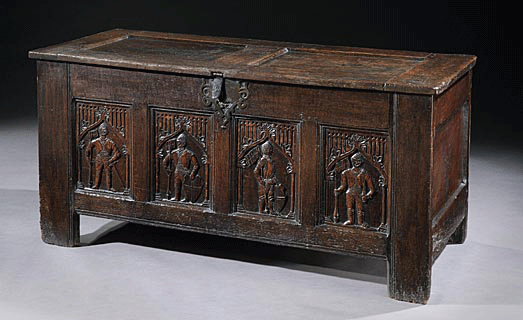
But all these objects have two other ingredients—form and function.
Arbiters of good design have long held that form follows function. But
while that concept may hold up today with the design of a spatula at
Target, antiques are quite a different matter, for many of them are
nearer to art than many people realize.
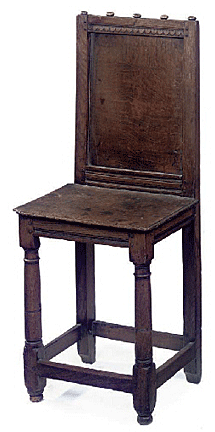 Museum
curators have created a category for these objects called the decorative
arts. Items in their collections not only have a function but help
decorate the homes of their owners. Museum
curators have created a category for these objects called the decorative
arts. Items in their collections not only have a function but help
decorate the homes of their owners.
Exactly what is form. The form of an object is its shape. What a person
might use the object for is its function. Today, we speak of ergonomics.
That concept isn’t new. Handles on tools have been shaped to fit the
human hand ever since man was capable of carving wood. Cabinetmakers
learned long ago that the finest wooden chair seats should have an
indentation so that the backside of the sitter would set into the seat,
thus making it more comfortable. It’s unfortunate that the Jacobeans
didn’t practice this, for the seats in their chairs were as flat as a
board and just as hard.
The function of objects have more or less always dictated their form.
People sit at tables. They sit on chairs. Drawers hold many things,
including clothes. Chests are basically stacks of drawers. Generally,
drinking glasses are round. Pots are also round.
 Only
in the very beginning was furniture made just for function. People got
tired of plain, simple pieces. Even if a piece lacked details, its lines
flowed. But as far back as ancient Egypt, and perhaps before, makers of
the objects used every day added something else to their
pieces—decorative design. Only
in the very beginning was furniture made just for function. People got
tired of plain, simple pieces. Even if a piece lacked details, its lines
flowed. But as far back as ancient Egypt, and perhaps before, makers of
the objects used every day added something else to their
pieces—decorative design.
While ancient cultures had their own sense of style, the style—that is
the type of artistic design—of everyday objects didn’t really begin in
earnest until the Middle Ages. The number of different objects wasn’t as
great as in future centuries, but, nevertheless, makers adorned their
pieces with carved images of saints, devils, angels, cherubs, all
miraculously related to religion. At the time, religious objects were
given the most artistic design. Objects used by peasants were still
simple and as functional as possible.
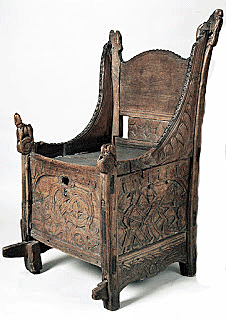 A
medieval chair in which an archbishop sat looked more like a throne
compared to its common counterpart, a simple stool, in a serf’s cottage.
As cultures and technology improved, so did the design of things. And as
time marched on, more and more people were able to afford to own
beautiful objects. And beauty is what separates what some call “real”
antiques from all the other objects out there. But snobbishness aside,
all objects, whether unique or common have their own design—their own
style. A
medieval chair in which an archbishop sat looked more like a throne
compared to its common counterpart, a simple stool, in a serf’s cottage.
As cultures and technology improved, so did the design of things. And as
time marched on, more and more people were able to afford to own
beautiful objects. And beauty is what separates what some call “real”
antiques from all the other objects out there. But snobbishness aside,
all objects, whether unique or common have their own design—their own
style.
During the 17th century, the Dutch began to carve impressive pieces of
furniture from oak. The pieces all had functions, but they also had a
heavy, unmistakable style.
The French have always been style leaders. Each of the kings named Louis
had their own style. While each built on the style of the former, the
end result was an elegant design that remains popular today.
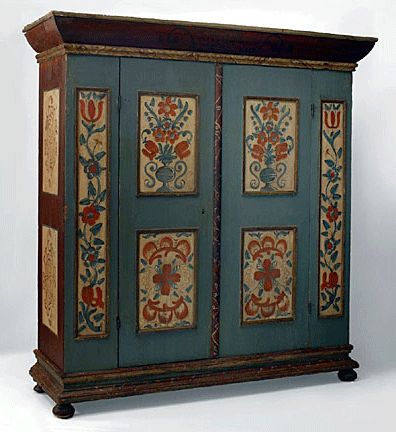 The
Germans, always seeking to be as efficient as possible, came up with
totally new designs for storage and ways of decorating their furniture
and even their homes. Graining—the delicate handpainting of common woods
to look like even better woods—became so popular that it influenced many
furniture designs and interior decoration both in Europe and America..
This love of painted decoration went further to colorfully adorn all
types of furniture. The
Germans, always seeking to be as efficient as possible, came up with
totally new designs for storage and ways of decorating their furniture
and even their homes. Graining—the delicate handpainting of common woods
to look like even better woods—became so popular that it influenced many
furniture designs and interior decoration both in Europe and America..
This love of painted decoration went further to colorfully adorn all
types of furniture.
The bottom line is that while function influences the basic design of
all objects, it’s artistic decoration that takes many pieces to the next
level—the level of antiques.
Many people think that if an object is old that it must be antique or at
least worth something. The value that’s placed on antiques stems not
from age—although this has some bearing—but from artistic design. A
wooden bowl will certainly hold cooked vegetables. But one made of fine
porcelain and adorned with flowers not only holds the same vegetables,
but makes their appearance and the act of eating them more pleasing.
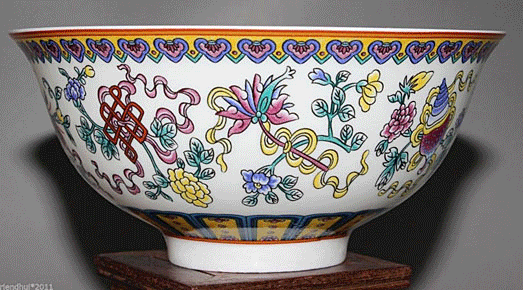
Antique collectors then seek the best of decorative design. To them the
beauty of an object is far more important than just its function.
<
Back to Antiques Extra! Archives |
